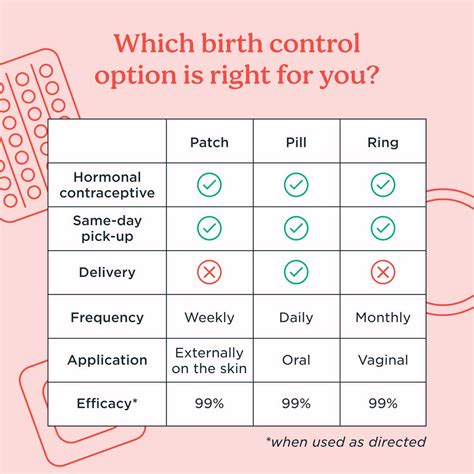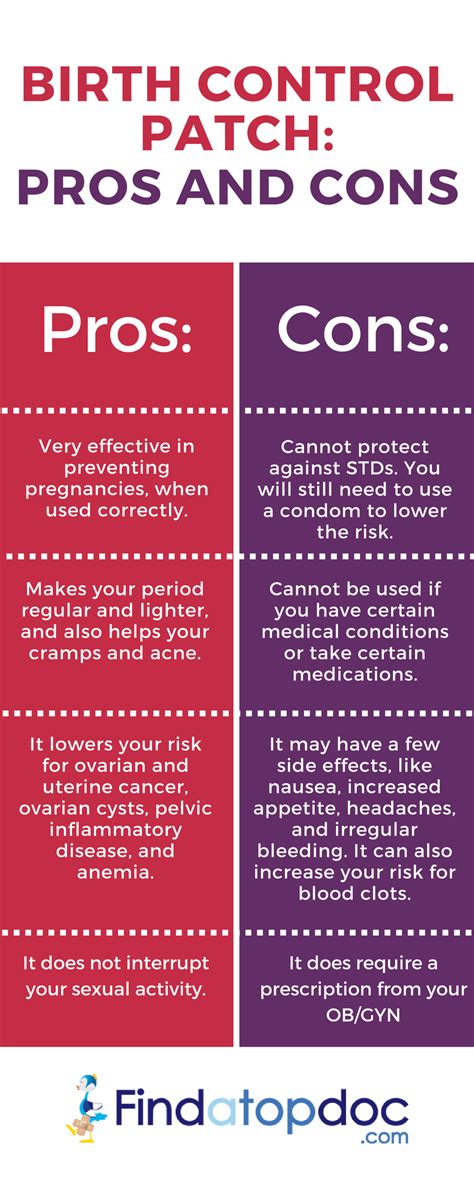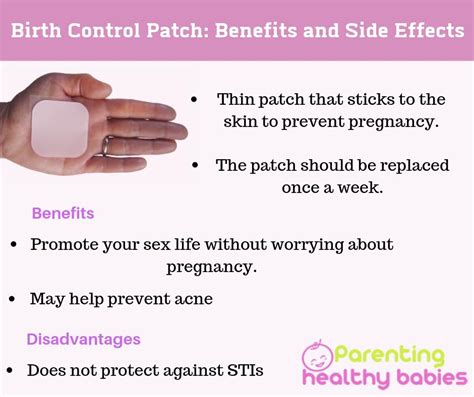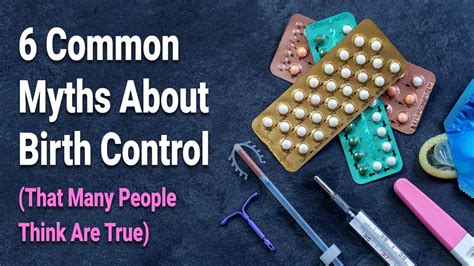Intro
Discover the ultimate Birth Control Patches Guide, covering types, effectiveness, and side effects of hormonal patches, including contraceptive patches and transdermal patches for womens reproductive health and family planning.
The use of birth control patches has become increasingly popular among women due to their convenience and effectiveness. These patches are a type of hormonal contraception that releases estrogen and progestin into the bloodstream, preventing ovulation and thickening the cervical mucus to prevent sperm from reaching the egg. With so many options available, it's essential to understand the benefits, risks, and proper use of birth control patches to make informed decisions about reproductive health.
Birth control patches have been shown to be highly effective in preventing pregnancy, with a success rate of over 99% when used correctly. They are also easy to use, as they only need to be applied once a week for three weeks, followed by a patch-free week. This convenience factor has made them a popular choice among busy women who want to take control of their reproductive health. However, it's crucial to weigh the benefits against potential side effects, such as skin irritation, breast tenderness, and mood changes.
The importance of understanding birth control patches cannot be overstated, as they can have a significant impact on a woman's overall health and well-being. By learning about the different types of patches available, their benefits and risks, and how to use them correctly, women can make informed decisions about their reproductive health and take control of their bodies. Whether you're considering switching from another form of birth control or are looking for a convenient and effective way to prevent pregnancy, this guide will provide you with the information you need to make the best decision for your health.
How Birth Control Patches Work

There are several types of birth control patches available, each with its own unique characteristics and benefits. Some patches are designed to be worn for a longer period, while others may have a shorter wear time. Understanding the differences between these patches can help women choose the best option for their lifestyle and preferences.
Types of Birth Control Patches
There are several types of birth control patches available, including: * Xulane: This patch is worn for one week and contains a combination of estrogen and progestin. * Twirla: This patch is worn for one week and contains a combination of estrogen and progestin. * Ortho Evra: This patch is worn for one week and contains a combination of estrogen and progestin.Each type of patch has its own unique benefits and risks, and women should consult with their healthcare provider to determine which option is best for them.
Benefits of Birth Control Patches

In addition to these benefits, birth control patches can also have a positive impact on a woman's overall health. They can reduce the risk of certain health problems, such as anemia and pelvic inflammatory disease, and can even help to improve acne and reduce the risk of certain types of cancer.
Risks and Side Effects
While birth control patches can be highly effective and convenient, they can also have some risks and side effects. Some of the common side effects include: * Skin irritation: Some women may experience skin irritation, such as redness, itching, or rashes, when wearing the patch. * Breast tenderness: Birth control patches can cause breast tenderness, which can be uncomfortable and painful. * Mood changes: Some women may experience mood changes, such as depression, anxiety, or irritability, when using birth control patches. * Headaches: Birth control patches can cause headaches, which can be mild or severe.It's essential to weigh the benefits against the potential risks and side effects and to consult with a healthcare provider before starting to use birth control patches.
How to Use Birth Control Patches

It's essential to follow the instructions carefully and to consult with a healthcare provider if you have any questions or concerns.
Tips for Using Birth Control Patches
Here are some tips for using birth control patches: * Apply the patch at the same time every week to help you remember. * Choose a location that is comfortable and convenient. * Avoid applying the patch to areas with skin irritation or cuts. * Don't use makeup or lotions on the skin where the patch is applied.By following these tips and using birth control patches correctly, women can enjoy the convenience and effectiveness of this form of contraception.
Common Myths About Birth Control Patches

It's essential to separate fact from fiction and to consult with a healthcare provider if you have any questions or concerns about birth control patches.
Debunking the Myths
Here are some additional facts to debunk the myths about birth control patches: * Birth control patches do not protect against sexually transmitted infections (STIs). * Birth control patches can be used by women who are breastfeeding, but it's essential to consult with a healthcare provider first. * Birth control patches can be used by women with certain medical conditions, such as high blood pressure or diabetes, but it's essential to consult with a healthcare provider first.By understanding the facts behind the myths, women can make informed decisions about their reproductive health and take control of their bodies.
Conclusion and Next Steps

We invite you to share your thoughts and experiences with birth control patches in the comments below. Have you used birth control patches before? What were your experiences like? Do you have any questions or concerns about using birth control patches? Share your story and help others make informed decisions about their reproductive health.
What are the benefits of using birth control patches?
+The benefits of using birth control patches include convenience, effectiveness, regulation of menstrual cycle, and reduced risk of ovarian cysts.
How do I use birth control patches?
+To use birth control patches, apply the patch to a clean, dry area of skin on the upper outer arm, buttock, or abdomen. Wear the patch for one week, then remove it and apply a new one. Repeat the cycle for three weeks, then take a patch-free week.
Are birth control patches safe to use?
+Birth control patches are generally safe to use, but they can have some risks and side effects. It's essential to consult with a healthcare provider before starting to use birth control patches, especially if you have any underlying medical conditions or are taking certain medications.
